Source: The Conversation (Au and NZ) – By David Lindenmayer, Professor, The Fenner School of Environment and Society, Australian National University
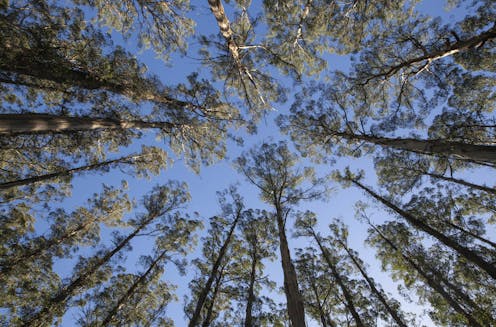
Meghan Lindsay/supplied, CC BY-NC-ND
Australia has an extraordinary diversity of trees, with more than 820 species of eucalypts alone. But not all trees are created equal. Some species can turn into giants, like the majestic mountain ash (Eucalyptus regnans) and the impressive white fig (Ficus virens).
Our newly published paper documents the tallest and the biggest circumference trees across the continent, and the biggest trees in each state and territory.
The top 20 tallest trees in Australia are all mountain ash trees, between 90m and 100m tall. Tasmania dominates with 16 of the tallest trees. The other four are in Victoria. The tallest tree in the country, Centurion, is in Tasmania. It was last officially measured at 99.8m tall, but recent unconfirmed measurements suggest it may now be over 100m.
Despite widespread land clearing, Australia still supports some of the biggest trees in the world, but we are at risk of losing them. Large old trees play important roles in ecosystems and we must make sure they are protected.
Why are big trees important?
Widespread land clearing has led to a loss of old trees in Australia. In New South Wales, more than half the original forest cover at the time of European colonisation has been removed. The trees in some ecosystems, such as those formerly dominated by temperate woodlands, are 95-99% cleared. In the Murray Darling Basin alone, between 12 billion and 15 billion trees have been cut down.
The loss of large old trees can have major impacts on ecosystems. These trees store huge amounts of carbon. Stands of old-growth trees produce significantly more water than catchments dominated by young trees.
Large old trees also provide habitat for many species of other plants and animals, such as the leadbeater’s possum and greater glider. The hollows that develop in large old trees are especially important in Australia. More than 300 species of vertebrates depend on these hollows – a greater proportion than anywhere else on Earth.
Read more:
Cockatoos and rainbow lorikeets battle for nest space as the best old trees disappear
These trees are also important in First Nations and Western cultures. For example, large old trees are sacred places and were birthing sites for First Nations women. They are also part of many religions and feature in numerous books, movies and famous paintings.
The tallest trees
Centurion, Australia’s tallest tree, was damaged in a bushfire in 2019 but luckily survived. Other giant mountain ash trees are declining in height as their crowns die back, part of the natural ageing process.
There are concerns that fire, logging and climate change are leading to a hidden collapse of mountain ash ecosystems.
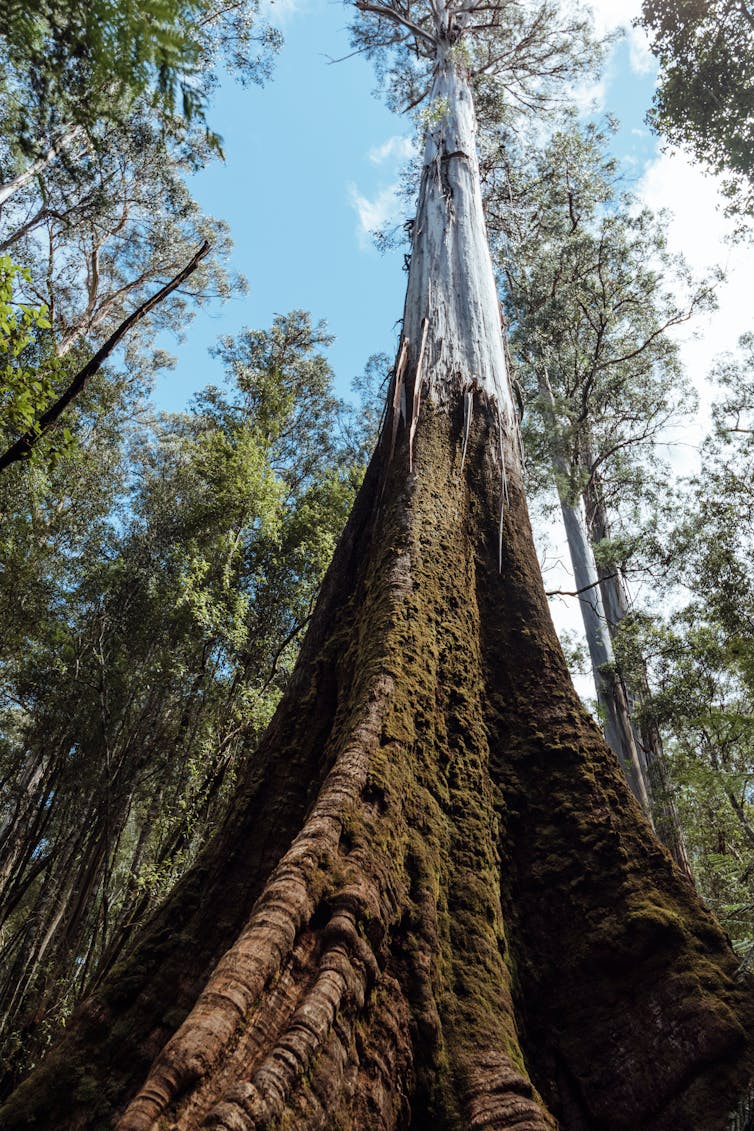
Fabi Mingrino/Shutterstock
Interestingly, there are historical records of trees significantly taller than the ones known today. For example, a 113m tall mountain ash was felled and then measured in 1880 in Victoria.
Other trees have been claimed to exceed 130m in height. The accuracy of these claims is under question, however, due to physiological constraints on tree height. Trees cannot pump water from their roots up to their canopy over such vast distances.
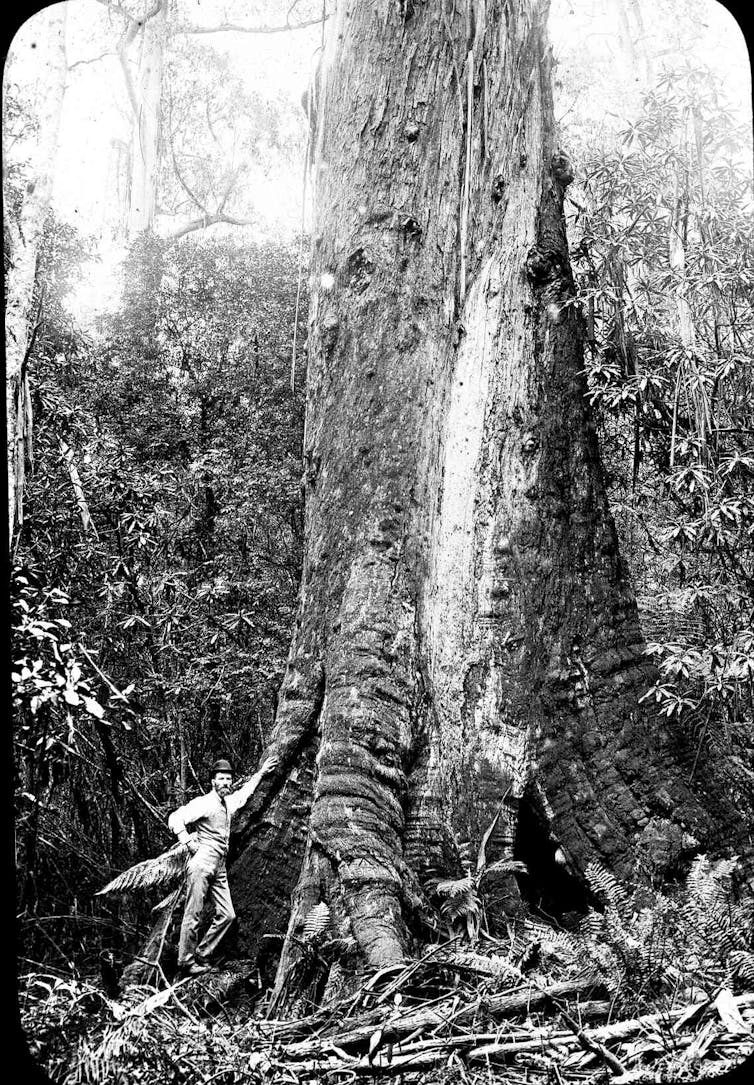
A.J. Campbell/Museums Victoria
The trees with the biggest girth
Tasmania again dominates as land of the giant trees, with 12 of the 20 trees with the biggest girth. The top 20 also features trees from New South Wales, Western Australia, Queensland and Victoria. To work out the girth of a tree, its circumference is measured at a height of about 1.4m up the trunk.
A white fig in northern New South Wales is the tree with the largest known circumference in Australia at 31m. To put that into perspective, it would take about 18 people from fingertip to fingertip to circle the tree.
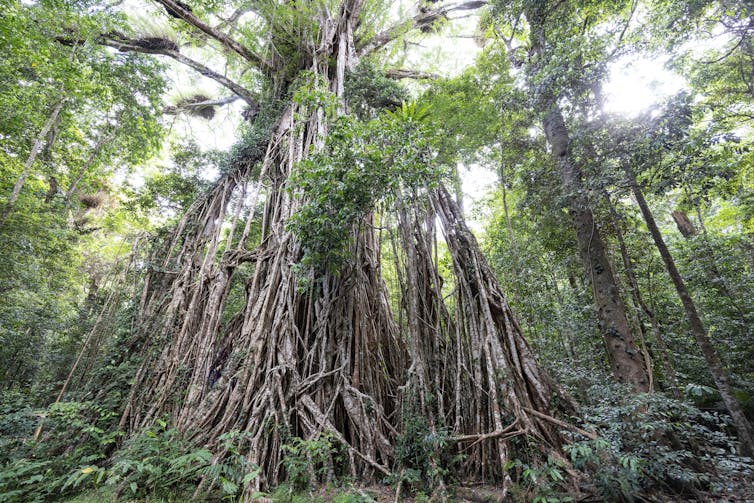
Ken Griffiths/Shutterstock
Measuring the circumference of figs can be very challenging. This is because the way the trunks grow creates “air points” where the trunk is not in contact with the measuring tape.
Mountain ash again dominates the list, accounting for 11 of the 20 largest circumference trees. The mountain ash with the biggest girth was Twin Towers, coming in at a whopping 22.4m.
The Moreton Bay fig (Ficus macrophylla) also made it into the top 20, coming in at number 2 with a specimen 29m in circumference. As did red tingle (Eucalyptus jacksonii) with an individual measuring 22.3m coming in at number 4.
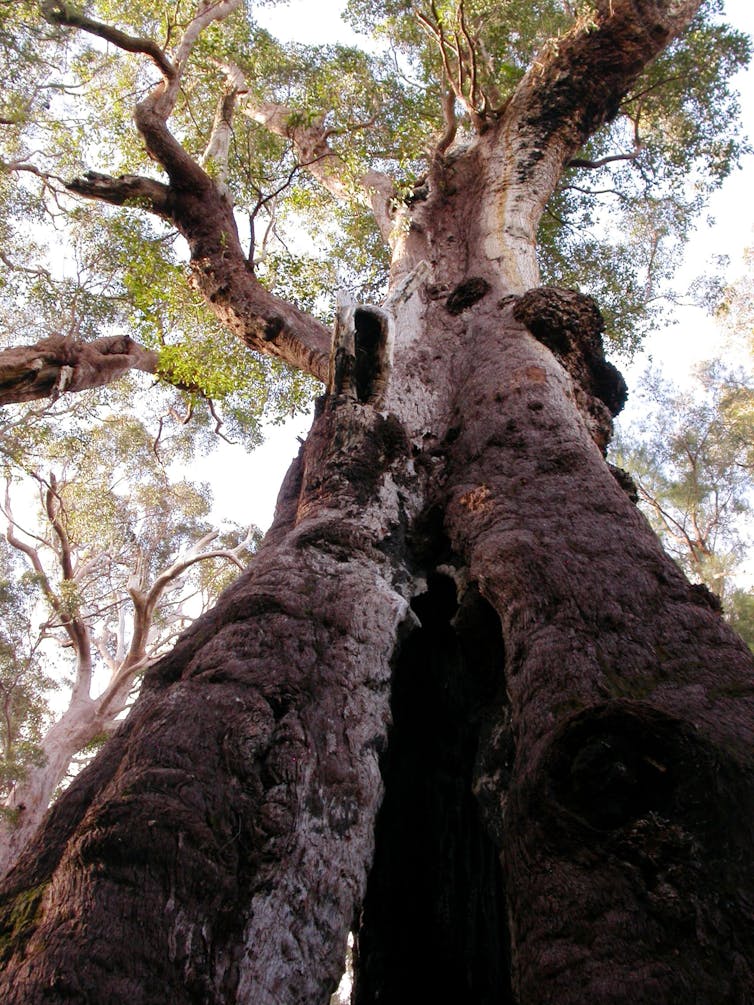
Giles Watson/flickr, CC BY-SA
Messmate (Eucalyptus obliqua) also made it into the top 20. At 20.5m in circumference, the Mt Cripps Giant came in at number 8 on the list. Messmates were the first of the eucalypts to be formally described (in 1788), giving us the scientific name Eucalyptus.
We need large trees
Large old trees are under threat in many landscapes. They are declining in forests, woodlands, savannas and agricultural and urban environments across Australia.
Read more:
The end of big trees?
Large old trees are at risk from wildfires, disease, logging and climate change. Even though such trees are now only rarely cut down in logging operations, logging in the surrounding landscape makes them more vulnerable to collapse from wind damage. Climate change, and especially long droughts, also can increase the chance of large old trees dying. This is because of the stress of pumping water all the way to the canopy.
The many important ecological and cultural roles played by large old trees mean we must work far harder to protect the ones that survive. One of the important protection strategies will be to create larger buffers in areas of forest.
We also need to think about growing the next cohorts of large old trees. It is not possible to become a big tree without being a small one first. We need to make sure younger stands of trees are protected so they can become new generations of giants in the centuries to come.
David Lindenmayer acknowledges the major contributions to this work from Dr Jess Williams and Mr Bret Mifsud.
![]()
David Lindenmayer receives funding from the Australian Research Council, the Government of Victoria and the Australian Government.
David Lindenmayer acknowledges the major contributions to this work from Dr Jess Williams and Mr Bret Mifsud.
– ref. Why Tasmania and Victoria dominate the list of Australia’s largest trees – and why these majestic giants are under threat – https://theconversation.com/why-tasmania-and-victoria-dominate-the-list-of-australias-largest-trees-and-why-these-majestic-giants-are-under-threat-200276







